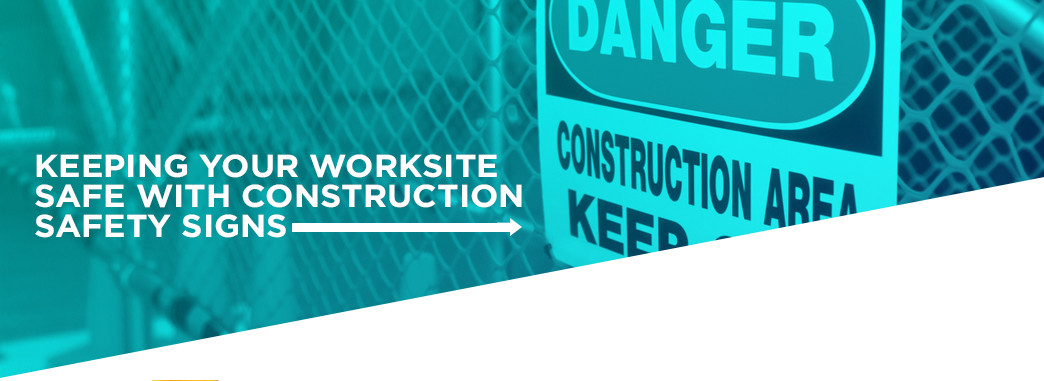Construction Safety Signs
Keeping Your Worksite Safe With Construction Safety Signs
Make safety the priority on your worksite with an array of construction warning signs. These signs inform and warn those on site about hazards in the area. Whether you need speed limit indicators, warning labels or posts to indicate hard hat areas, discover everything you need to know about safety signs on your site.
OHSA Regulated Construction Site Safety Signs
If anyone ever asks, "Do we need jobsite safety signs?", the answer is always yes. The Occupational Safety and Health Administration (OSHA) requires signs on construction sites and regulates the content and appearance of those signs. While the types of signs you need depend on your construction site's hazards, you can rest assured at Duncan-Parnell, we will help you get the OSHA-compliant signs suited to your workplace.
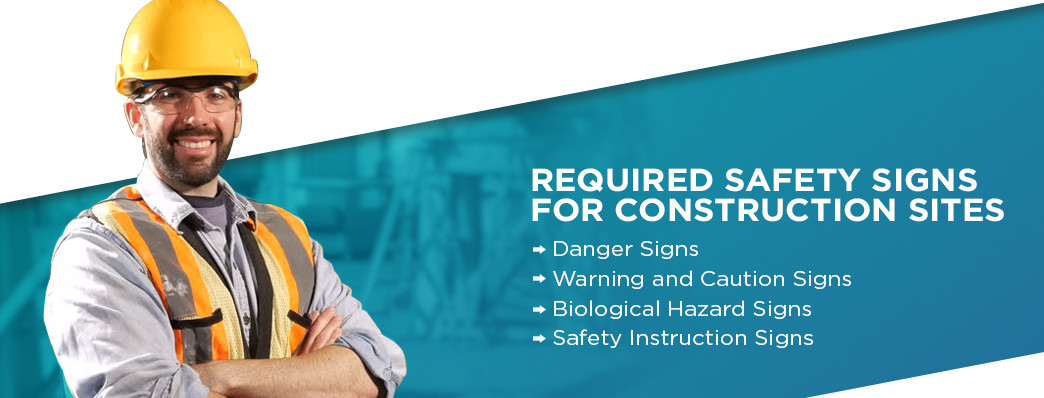
Required Safety Signs for Construction Sites
Your jobsite safety signs may include everything from safety instructions to warnings about biohazards. Required signage depends on the threats posed in the area. There are four main types of alert signs including those that warn of different levels of danger and those that reinforce the training your workers have received in maintaining a safe environment. Putting these signs around your worksite protects your employees from dangers.
Because these signs are so effective at warning those nearby about threats, OSHA requires their use. To ensure that all workers understand the meanings on the warnings, train your workers in their preferred languages about the signs as well as use pictographs that convey the hazards the signs warn against. Doing these will keep you compliant with workers' rights on the jobsite. Additionally, clear site safety signs images that indicate the hazard, such as a biohazard symbol or an electric bolt, show all users to be aware. Color coding the signs per OSHA regulations also ensures everyone can understand the threat level presented, regardless of their native language.
1. Danger Signs
Of all the safety signs on your jobsite, danger signs may be the most important because these warn of the highest risks in the area. The most immediate threats require a danger sign nearby. If the potential for death or severe injury lies close, you must install a danger sign. OSHA recommends danger signs have red, black and white color schemes. Red is a universal indicator of a serious hazard and the color of stoplights. The red color on danger signs tells workers to stop and think about what they need to do before approaching the area.
Because knowing about the information these signs provide is so essential to your workers' safety, OSHA requires you to show your employees where the warnings are and inform them of precautions they must take.
2. Warning and Caution Signs
Warning signs show those nearby to take a moderate level of caution because dangerous conditions may exist. This level is a step down from danger and slightly more severe than caution. Unlike danger signs, which have no replacements, warning signs may replace caution signs.
Caution signs show that workers need to remain alert for potential dangers or minor hazards. However, the chances of bodily injury in an area with a caution sign are significantly lower than in places near a danger sign. These signs must be bright yellow with black lettering. Slipping hazards are a type of threat you can use caution signs to warn about.
3. Biological Hazard Signs
You need biological hazard signs whenever a potential or actual threat exists. These signs also notify workers of labs, containers, animals and other things that could harbor biological agents. The coloring must be fluorescent orange or orange-red. Lettering should contrast clearly against the background for easy reading. You may need these signs for your construction project if you are renovating labs or other areas that contain active biological hazards.
Any sign with a biological hazard symbol must have the design oriented with one of the three circles pointed upward and the other two along the bottom of the sign, in a triangular pattern. OSHA requires this orientation of this symbol because, when properly placed, the emblem is a universal indication of a health hazard from a biological source.
4. Safety Instruction Signs
Even seasoned employees need safety reminders. Safety instruction signs placed strategically around your jobsite do just that. Instructions your workers need for safety, such as informing them of hard hat areas, go on instructional signs. Use a white background with black lettering. Atop this, a green field with white letters shows the instructions needed.
What are the Benefits of Safety Signs?
- Preventing injuries and fatalities is the biggest reason to install safety signs. In the construction industry in 2017, 310,000 medically attended injuries occurred. Additionally, 924 people died. None of these incidents had to happen. All came from preventable causes. Putting new safety signs on your site is one way to contribute to a safer working environment. Preventing even one injury or death will make installing signs well worth the effort.
- Safety signage around your worksite offers accident prevention benefits, but the most important comes from OSHA. This group requires construction sites and other workplaces with potential hazards to post safety signs. These signs must follow the OSHA guidelines for wording, color and placement. If you lack adequate signage on your jobsite, no matter how new it is, you could incur a fine. Even if you did not have a legal obligation to put signs around your jobsite, they still perform many services for your employees and you.
- Putting safety signage around your worksite shows how much you care about the health and safety of your workers. All workers have the right to a safe workplace, but they also need to feel safe. When you inform your workers of hazards and how they can avoid problems, you empower them in their safety and protect them from accidents.
- While the positive benefits of having signs on your site are desirable, you also can avoid the adverse effects of not having safety signs. If you don't post signs to warn of dangers on your jobsite, you could be liable if a worker gets injured. Signs posted correctly could help protect you from negligence charges in the event of an accident.
- A safer worksite does more than prevent accidents. It can also help you with gaining and retaining employees. Workers will want to be on a jobsite with fewer accidents and safety problems. If you create a reputation for safety, as evidenced by your use of safety signs, you can draw more employees to your company. Because your workers will spend more time working and less time on sick leave from accidents, you will pay less for workers' comp and have higher productivity from having more of your workers on site.
- Clients don't like project delays, which can happen with accident-prone sites. Installing safety signs gives the impression of a place that operates with fewer incidents. Safety signs coupled with your actual record of employee safety can entice potential clients to choose your company for their projects. Of course, you must maintain both the appearance and actual records of safety. With safer workers, your construction projects will move faster with fewer setbacks because you won't have as much lost time from accidents.
Of course, no one wants accidents to happen on their worksites. Signage in the area prevents problems by informing everyone, visitors and workers alike, of possible dangers. Information is a powerful tool you can give to your employees through strategically placed signs that warn of hazards and remind of safety procedures.
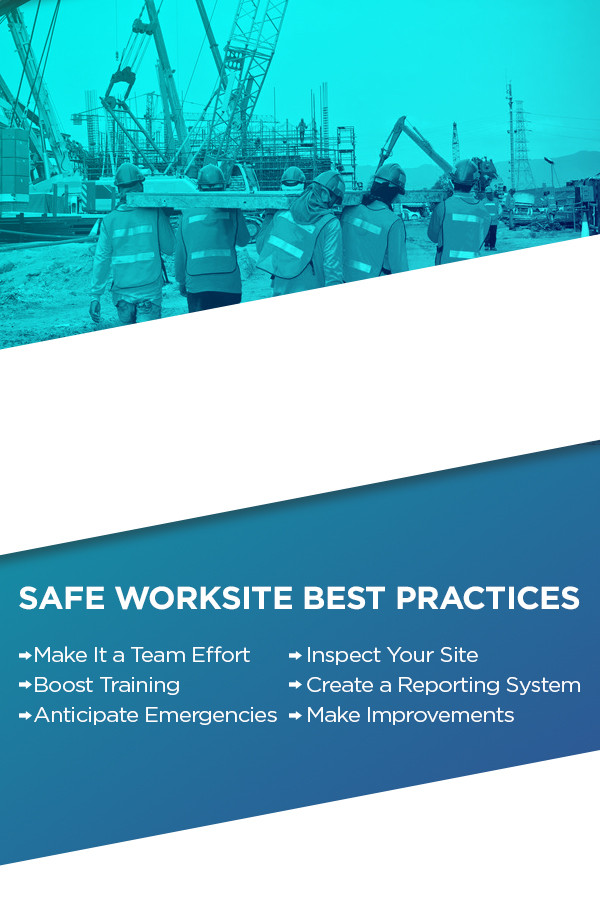
Safe Worksite Best Practices
Creating a safe worksite requires more than hanging signs. You also have to be an active leader in creating a culture of safety. Some of the best practices for worksite safety include:
1. Make It a Team Effort
Connect with your workers to identify and mitigate hazards on your construction site. With the site continually changing as the project progresses, you need eyes on the worksite regularly to catch new risks before they cause accidents. Finding dangers does not require specialized training. According to OSHA, you only need common sense and the tools available onsite to find hazards where you work.
2. Boost Training
All workers need safety training, but when you have to change contractors on site daily, you must reiterate the safety standards you establish. Host regular training meetings with your employees. However, balance these training sessions with getting the work done. Installing safety instruction signs around your worksite can remind your employees of the safety tips they need to know.
3. Anticipate Emergencies
Be proactive when it comes to emergencies by identifying the most likely problems and creating plans to respond to them. If you cannot conduct emergency drills, at least give the methods you have for accidents or other issues to your workers. Also, post these directions in a central location so your employees can refer to them at their leisure.
4. Inspect Your Site
Conduct regular inspections of the site to find and correct any hazards you see. Choose random times to conduct investigations to look for problems at all times during the workday. Regular inspections make it easier to find problems by knowing where things should be and when something is out of place.
5. Create a Reporting System
You can't know about dangers your workers see unless they have a way to report them. Anonymous reporting is an option for those afraid of informing you of incidents or hazards in person. When you collect reports, make sure to respond in an appropriate amount of time. If a danger exists that you can fix, do it as soon as possible to avoid accidents.
6. Make Improvements
While your construction site will regularly change, you can always make improvements and updates to your safety system. Reduce as many hazards on the jobsite as possible, and train workers to deal with those that still exist. You can mitigate the dangers of your construction site, but only if you take an active role in creating a safe working environment where your employees feel comfortable giving you feedback on the hazards they see.
7. Location
Construction safety signs should always be placed in a highly visible location, ideally near eye level. Signs should not be obscured by anything including foliage, equipment, or vehicles. Keeping signage on full display is paramount to maintaining a safe operation.
Employing these practices into your jobsite can make it a safer place for your workers, which will reduce accidents and enhance productivity.
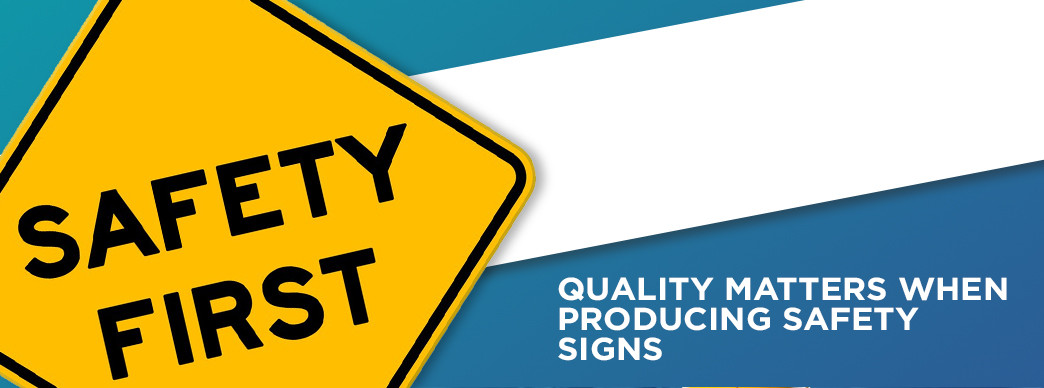
Quality Matters When Producing Safety Signs
The quality of all your worksite's safety gear matters, including the signs. You need signs to promote safety by warning workers of dangers or informing them of safe practices. Once you've put up the signs, though, your task has not ended. In fact, you will need to regularly check the integrity of the warnings to ensure they remain clear and nothing has obscured the view to them. To make your task more accessible and to increase the time before you need to replace the signs, get high-quality postings the first time.
High quality for signs means materials that hold up to the elements, even the brightest sunlight and most torrential rain. When we create signs for your jobsite, we give you a range of finish options, including graffiti-proof. You can ensure the longevity of your new signs with the right finishes for the environment where your signs will hang.
Placement of the signs is critical to your workers seeing them. OSHA dictates the signal word on the sign be visible from five feet away. You must also place the sign as close as possible to the hazard it warns about. The type of sign and its signal word depend on the immediacy of danger and the kind of threat. Biohazard signs and caution signs have very different uses. Because the applications of these signs have such strict guidelines, consult us about the signage you need to avoid making a mistake with choosing and hanging the signs.
When installing signs, OSHA prohibits installation methods that could allow the warning sign to fall off accidentally. Just propping up your signs will not suffice. You need professional installation. That's where our expert installers come in. They will work with you from the start to the finish of the project to ensure your signs are securely in place and where they need to be.
When you select the best quality for your signs, you're not just choosing a premium option. Better signs show you are willing to invest in the safety of your employees and your worksite. Additionally, better signs indicate that you are selecting safety warnings for your workers that will last, even with the harsh conditions on a construction site.
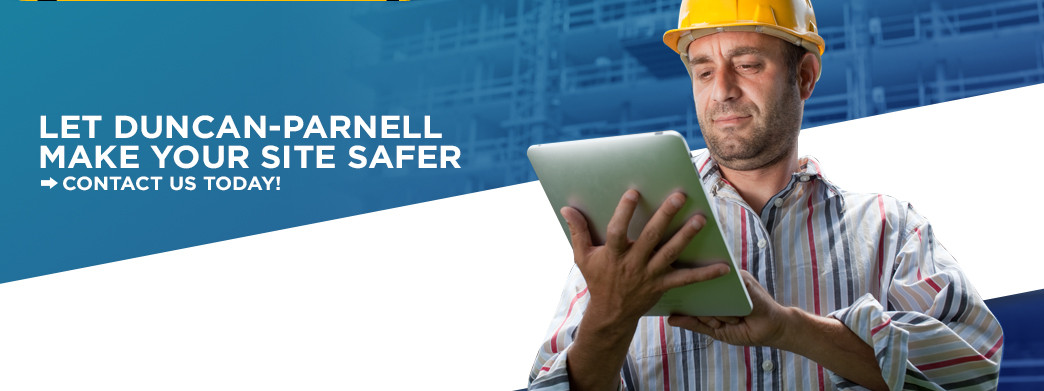
Let Duncan-Parnell Make Your Site Safer
Trust your site signs to our professionals at Duncan-Parnell. Our business has been around since 1946, offering quality service and products to contractors, engineers, architects and more. We have the knowledge and tools available to create for your site long-lasting, OSHA-compliant safety signage. Also, because we understand that you have deadlines to work with, we can work with your required timeline.
The materials we have available include those for indoor and outdoor signs. No matter where you need your safety notices, we can produce the ones you need. Connect with our team to get a free quote for your project. When you work with us, you'll see why our motto is, "Successful projects start here."
